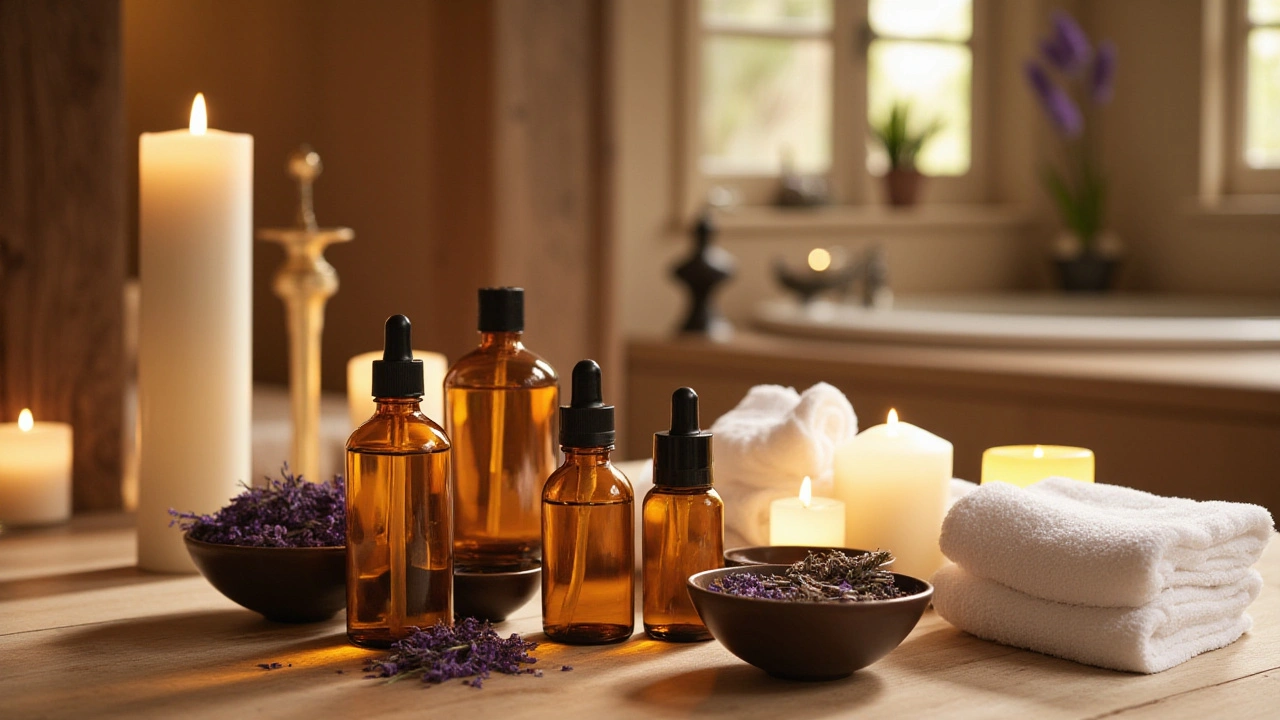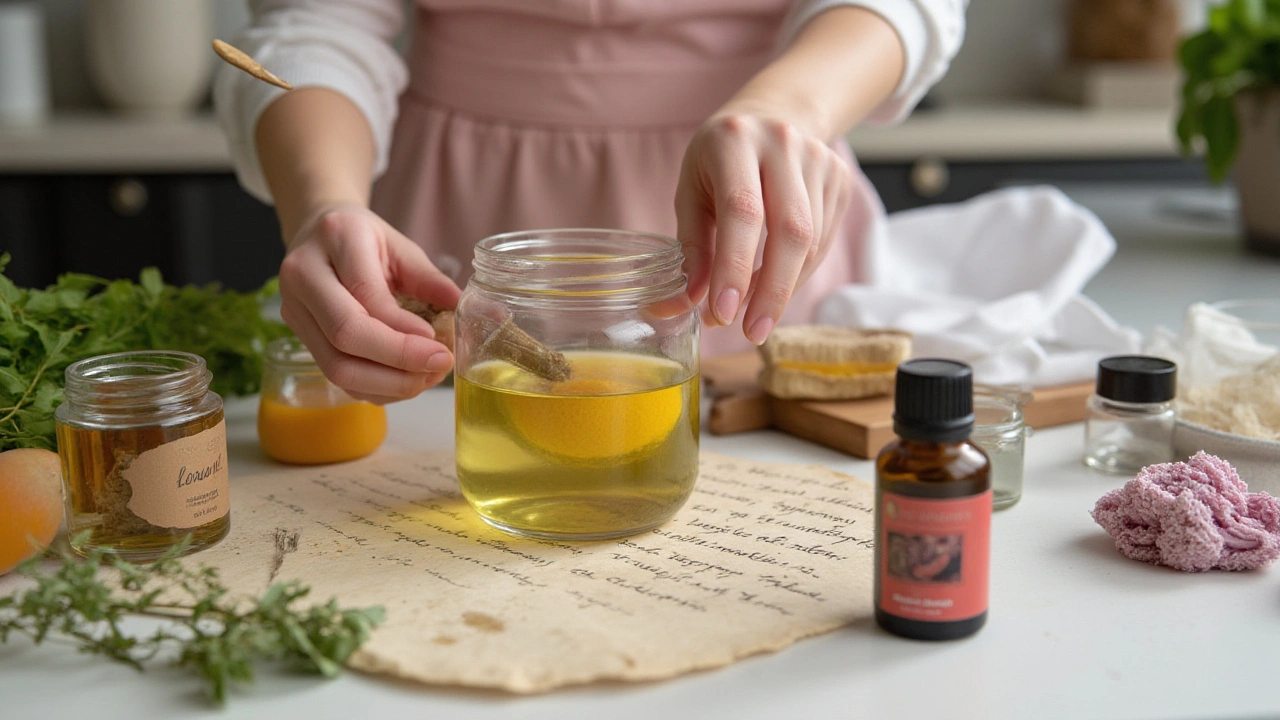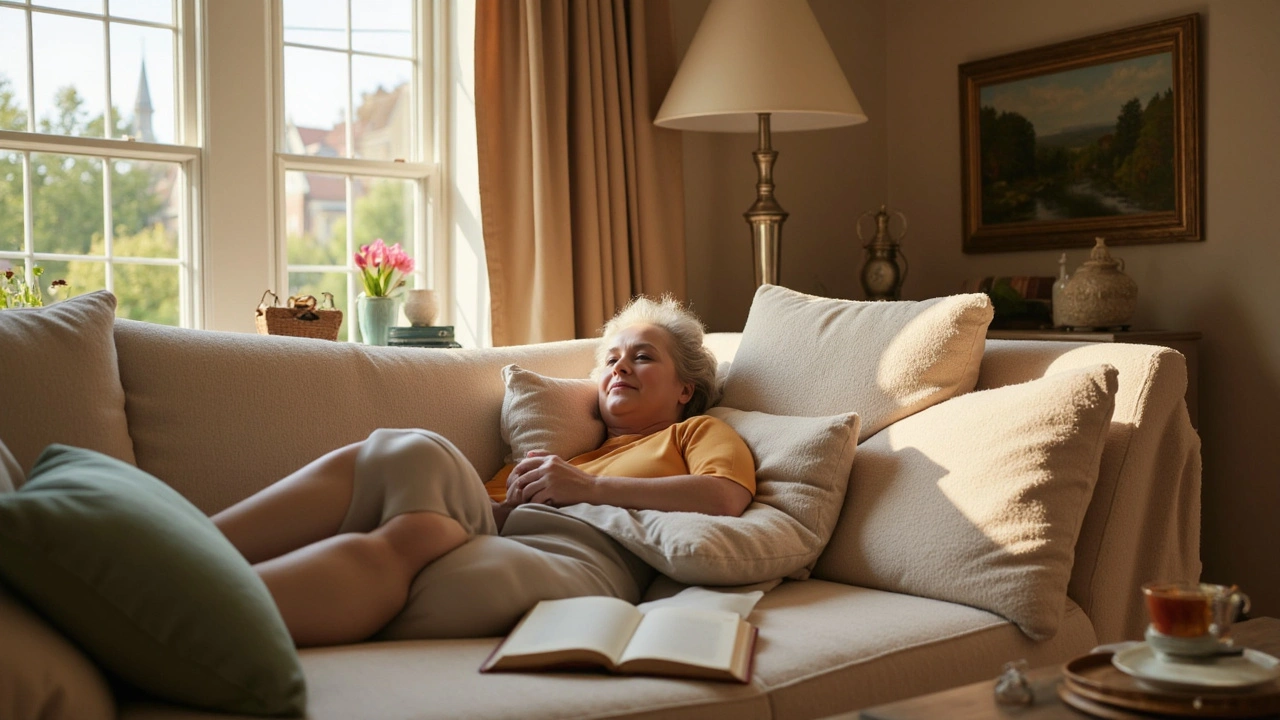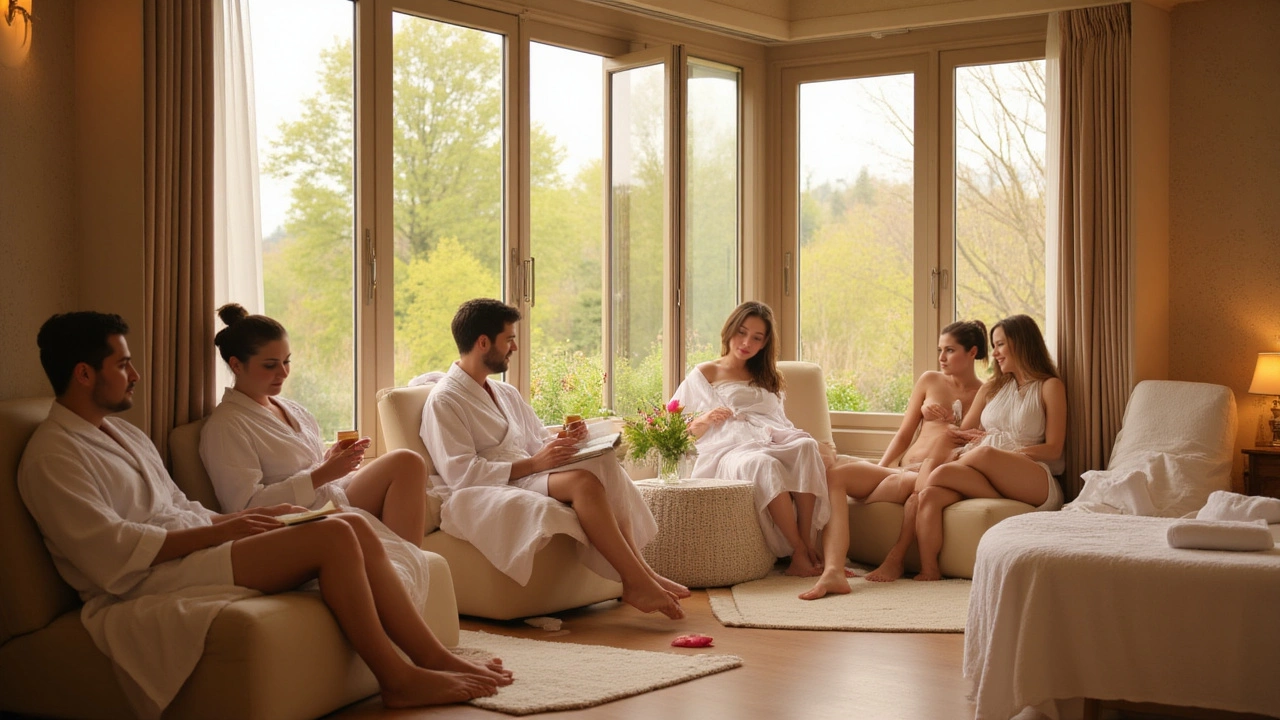Aromatherapy Massage Oils: Benefits, Blends, and Techniques for Ultimate Relaxation

You know that moment when stress is knotted up in your shoulders and the world just feels too loud? Aromatherapy massage oils can flip that around. These aren't just sweet-smelling bottles cluttering up Instagram—certain blends have solid evidence backing up their relaxing effects, and the right technique can make sore muscles beg for mercy. The real trick lies in mixing those oils smartly and using them with intention. If you want home spa magic, there’s no need for a chemistry degree, but having a few facts and tips at your fingertips can make all the difference.
What Makes Aromatherapy Massage Oils Special?
First off, not all massage oils are created equal. The magic in aromatherapy massage oils is the combo of potent plant extracts (aka essential oils) and nurturing carrier oils like coconut, grapeseed, or sweet almond. It’s this blend that transforms a basic rubdown into an experience that can unwind nerves, ease achy muscles, or even help lull you into deep sleep. For instance, lavender essential oil gets loads of love from scientists for its calming powers, actually lowering heart rate and blood pressure during studies. Meanwhile, peppermint oil gets credit for helping with tension headaches and taking the sting out of sore spots after a workout.
The carrier oils are just as important as the fragrant stuff. Jojoba and grapeseed soak in without leaving you greasy, so you don’t have to worry about sticking to your bedsheets. Fun fact: Grapeseed oil is loaded with vitamin E and omega fatty acids, which means it’s not just soothing – it’s also helping your skin stay soft and smooth. And for folks sensitive to scents, unscented carrier oils can be your plan B—some people just like the silky slip these give, without the aroma overload.
People have actually used aromatic oils for massage for thousands of years, even way back with the ancient Egyptians, Greeks, and Chinese. So, it’s not just today’s wellness obsession. Modern research keeps uncovering fresh reasons to get excited. For example, recent studies show that aromatherapy massage can help reduce anxiety and improve mood in people dealing with chronic stress or even depression—nothing woo-woo about it, just biology at work.
Top Massage Oil Blends and How They Work
Building your own blend might sound like something you need a lab coat for, but shake off that idea. The main trick is to think about what you want to feel. Need chill vibes for bedtime? Go for calming scents like chamomile, lavender, and sandalwood. Instead, want energy after a blah morning? Citrus oils like orange, grapefruit, and lemon, mixed with a hint of peppermint, are like espresso for your skin.
Let’s put it into practical combos. For relaxation, try mixing 4 drops of lavender, 2 drops of frankincense, and 2 drops of ylang-ylang in 2 tablespoons of sweet almond oil. For sore muscles post-workout, go with eucalyptus, black pepper, and a base of coconut oil. You won't drown anybody in perfumy clouds—just a soft, comforting aroma that works as you massage it in. Here are popular combo ideas and their effects:
- Stress Relief: Lavender + Bergamot + Clary Sage + Grapeseed Oil
- Muscle Recovery: Peppermint + Eucalyptus + Black Pepper + Coconut Oil
- Energy Boost: Lemon + Orange + Rosemary + Jojoba Oil
- Deep Sleep: Chamomile + Cedarwood + Lavender + Sweet Almond Oil
For most essential oils, stick to a safe dilution—2-3 drops per tablespoon of carrier oil is usually just right for adults. Kids or sensitive skin? Go even lighter. And always, always test on a small patch before you go for a full-body treatment. Essential oils are potent—the fun kind of powerful, but you don’t want surprises.
Want to go even deeper? Some oils (like eucalyptus and tea tree) offer a flush of cool on the skin—why portable mini spa fans sell out every summer, and why these oils make sense for post-workout massages or after sunburns. Others, like ginger or marjoram, feel warming, which is perfect for massaging into sore knees or stiff necks.

How to Use Aromatherapy Massage Oils for Best Results
This part is less about complicated choreography and more about going slow and being deliberate. Warm a little bit of oil between your palms—never apply super cold—and start with broad strokes, moving from the center of the body outward. Always work towards the heart—this supports blood flow and helps flush out tension.
Targeted massage techniques boost the benefits. Effleurage (those long gliding strokes you probably remember from any decent spa) help relax the body before you get into knottier spots with kneading or circular pressing. For headaches, a few gentle circles along the temples with a lavender blend can take the edge off a bad day. For stressed necks and backs? Firm, slow strokes along either side of the spine work wonders. Try using your thumbs in little circles to melt away tension—don’t go right on the spine, though, just the muscles beside it.
Touch and scent play well together. The skin absorbs those molecules (thanks to the carrier oils) while you breathe in the aroma, sending messages straight to your brain through the olfactory nerve. That’s why you might feel sleepy or energized in minutes—smells work fast.
You don’t need a fancy massage table. Most people make do with a sturdy bed, yoga mat, or even a sofa with a towel thrown over it. Just make sure you’re comfortable—cramping up halfway through a massage ruins the mood. After you’re done, don’t sprint for a shower unless you need to; let those oils soak in for a while, hydrating your skin and letting the aromatherapy linger.
If you want to turn things up a notch, set the mood. Dim the lights, play soft music, and leave your phone in another room. No buzzes, pings, or distractions—this is your time.
Aromatherapy Massage Oil Safety and Storage Hacks
Essential oils pack a punch, so a little respect goes a long way. Never apply them undiluted directly to your skin—think fire alarm for your skin cells. Always blend with a carrier oil. If you’re pregnant or have health concerns like asthma or epilepsy, double-check with your doctor before using new essential oil blends. Some oils like rosemary, sage, or thyme aren’t safe for everyone.
If you’ve got sensitive skin, patch test each new blend. Dip a Q-tip in your oil mix and dab just above your inner elbow. Wait a day—if you don’t itch or break out, you should be good to go. Reactions are rare but possible, especially with stronger oils like cinnamon or clove.
Keep your bottles in a cool, dark spot—heat and sunlight can break down the delicate molecules in essential oils, turning them rancid or just totally ineffective. Dark glass bottles work best (clear glass lets light ruin your blend). Most oils are best within 6-12 months—after that, the scent fades or the oil goes off. You wouldn’t use old salad oil on your skin, right?
Another thing—buying quality matters. Look for oils marked “100% pure essential oil.” Anything labeled “fragrance oil” may have synthetic fillers that don’t offer the spa-worthy effects or the skin benefits.
| Carrier Oil | Main Benefits | Absorption |
|---|---|---|
| Grapeseed | Rich in antioxidants, Vitamin E, lightweight feel | Fast |
| Sweet Almond | Soothes dry skin, gentle, hypoallergenic | Moderate |
| Jojoba | Mimics natural skin oils, non-greasy | Fast |
| Coconut | Deep moisturizing, antibacterial | Slow (solid at room temp) |
| Avocado | Rich in vitamins, deeply hydrating | Slow |

DIY Aromatherapy Massage Oil Recipes and Customization Tips
If the idea of mixing your own blend has always felt intimidating—don’t sweat it. Start simple. Grab a 2-ounce dark glass bottle. Add 2 tablespoons of carrier oil (grapeseed is a crowd favorite). Then toss in 4-8 drops of your chosen essential oil blends (never more than 2-3 oils per mix when you’re new). Shake it gently, and you’ve got a custom massage masterpiece.
Here are three easy recipes you can build right now:
- Tranquil Nights: 4 drops lavender, 2 drops cedarwood, 2 drops bergamot, 2 tbsp sweet almond oil
- Pick Me Up Blend: 3 drops peppermint, 3 drops sweet orange, 2 drops rosemary, 2 tbsp grapeseed oil
- Soothing Sore Muscles: 4 drops eucalyptus, 2 drops black pepper, 2 drops marjoram, 2 tbsp coconut oil
The best part? You can tweak each recipe to suit the mood, the weather, or even the time of day. Ran out of one oil? Swap with another in the same scent family—say, patchouli for sandalwood, or spearmint for peppermint. If you want a gentler aroma, use fewer drops.
Remember, less is more. Your nose (and your skin) doesn’t need to be hit with a wall of scent. And if your skin feels sticky after using your blend, just cut back on oils with slow absorption or increase the carrier oil.
Label your bottles and date them—you’d be surprised how fast a collection grows, and using fresh blends is part of the wellness game. If you create a blend that’s spot-on for your needs, write it down! You’ll want to repeat it later.
Turns out this isn’t about memorizing Latin names or chasing rare oils across continents. The beauty of aromatherapy massage oils is taking what’s proven to work and making it part of your every week. With the right blends, a little know-how, and a dash of creativity, you’re just a few drops away from bringing the spa home—no appointment needed.



